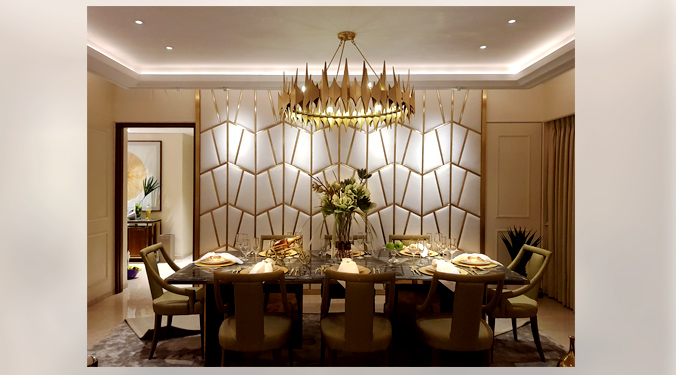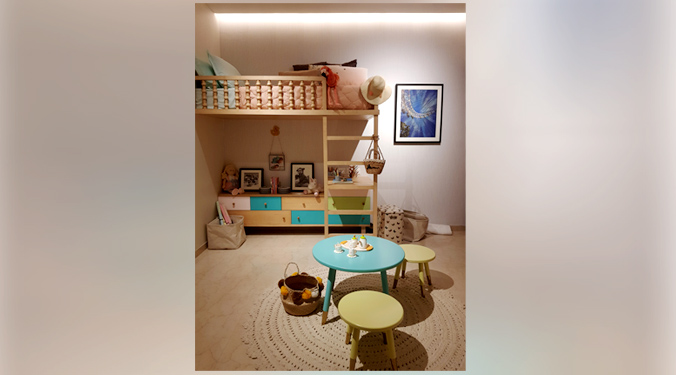In airports, dedicated areas require specific lighting solutions

Aryaman Jain, CEO of Innovative Lighting Designs Limited (ILDL), speaks about the effects of lighting on our health and the essentials of infrastructural lighting.

How does lighting affect our health and well-being?
Lighting impacts our circadian rhythms and the serotonin and melatonin levels in our body that govern our sleep patterns, moods and behaviour, productivity, cognition and overall well-being. Research shows a clear relationship between good lighting and elevated moods, energy levels, concentration, appetite and many other aspects of life. While on the other hand, improper lighting can cause gloominess and an overall reduced cognitive performance by our body. Considering its grave implications, lighting becomes a seminal part of the design scheme of any space. In prolonged dimly-lit spaces, one may feel sad or depressed and not know what’s causing it. Our biological processes are positively influenced by efficient lighting. Therefore, whether designing a residential or commercial space, using an ideal lighting scheme is crucial to the project’s success. For example, in a residential setting, a good lighting scheme can help create a relaxing environment after a long work day. On the other hand, in a commercial setting, it can increase productivity and lift the overall mood of the space by using the appropriate colour temperature, brightness, and interesting focal points.
How can lighting be used to uplift the mood of our living spaces?
Cooler and brighter lights are recommended during the daytime to maintain an ideal circadian rhythm. In contrast, warmer and dimmer ones are well suited for the evenings and nights, the opposite of which might disturb the sleep cycle and reduce our attention span throughout the day. Cooler light temperatures act as stimulators and are crucial for focused activities like reading, working, or cooking. They tend to increase our productivity and help us be more alert and attentive while making it difficult for us to fall asleep at night. The warmer or yellow tones on the colour temperature scale are closer to sunrise and sunsets when our bodies tend to be more at ease. The use of warmer tones of lights in any space tends to bring in calmness and peace, making the environment comfortable. Dim lights might create a soothing ambience while aiding the body to feel relaxed and more prepared to sleep.

Especially in infra spaces like railways and airports, what kind of lighting is desired?
Usually, in infrastructural spaces such as railway stations and airports, the lighting needs significantly vary based on the function of different complex parts. In airports, the light level depends on the kind of space — interior or exterior. For instance, the level of light in hanger areas ranges from 30-50 lux as they are outdoors. In contrast, interior spaces like the baggage and check-in areas require at least 300-800 lux as here tasks are usually performed. On the other hand, retail locations and atriums require up to 1000 lux. In hangers or open areas, giant floodlights and full cutoff luminaires are used because of strict restrictions; the light is not needed to go above 90 degrees, and the throw of the light should be entirely downwards. Hence a complete cutoff fixture is required. Additionally, only dark areas should be lit up. Otherwise, there should not be any use of spill lights. In railway stations, platform areas require a lot of light, ranging from 150-200 lux. The light depends on the project’s design, whether you are flooding or accenting the areas. Commonly, linear diffused lights are preferred as they do not cast shadows, but high-wattage downlights
and highway lights can also be used.
What can be said about the evolution of solar lighting in India?
Lighting systems are now instrumental in guaranteeing comfort and promoting users’ well-being. However, good lighting should not be judged by brightness alone. It should be energy-efficient, sustainable, and durable with minimum resistance. In this regard, Solar Lighting has a lot of potential for the future of lighting, especially as a renewable energy source. Solar LED lights are now reliable globally and are being used as a permanent replacement for conventional lighting systems. This shift towards renewable energy and the growing demand for energy efficiency has further
pushed the global market towards accepting solar lighting. Especially in rural areas, solar lighting has proved to be very beneficial where power supply is inconsistent. In infrastructural projects like airports, which are generally large scale and have high wattage requirements, the shift towards solar lighting is slower as they are not entirely feasible. But smaller areas such as bus bays and foyer areas are using solar lighting as there aren’t restrictions on wattage. So, parts of such large-scale projects might use solar lighting, but complete dependence on solar lighting is still a constraint.

For more info visit : https://www.ildlimited.com/
Cookie Consent
We use cookies to personalize your experience. By continuing to visit this website you agree to our Terms & Conditions, Privacy Policy and Cookie Policy.









